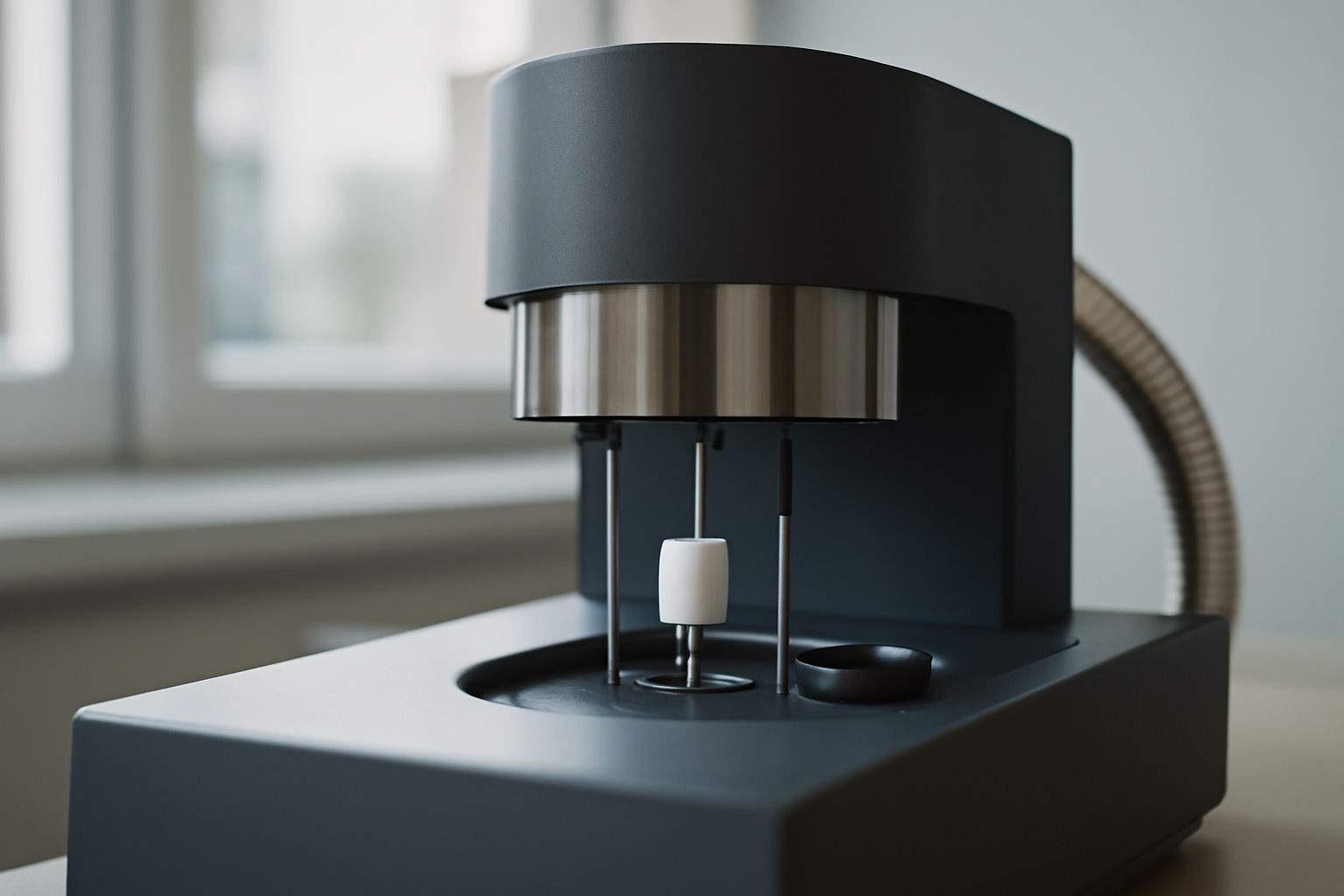Your cart is empty.
shop now
Your cart is empty.
shop now
Many researchers find unexpected shifts, lost sample mass, or instrument errors during TGA-DSC analysis. These problems create frustration and lead to wasted time and unreliable data.
The most common TGA-DSC issues include baseline drift, sample loss, material incompatibility, and instrumental errors linked to pans. Addressing them involves selecting the right pan material, ensuring proper sealing, and conducting regular calibration and cleaning for accurate results.

I help labs troubleshoot analysis problems by looking for patterns in errors and matching solutions to pan type, sealing method, or instrument settings. Here is my step-by-step approach to fixing frequent TGA-DSC analysis issues and keeping results reliable.
Baseline shifts confuse the real thermal events of a sample. This makes it hard to judge melting, glass transition, or decomposition accurately and wastes valuable research effort.
The primary causes of baseline shifts include pan deformation, uneven pan mass, contamination, residual moisture, and temperature fluctuations due to poor heat transfer in the sample holder.
| Issue | Common Source | Correction | Reference |
|---|---|---|---|
| Deformed pan | High temp, repeated use | Replace with new pan | DSC Guide |
| Mass difference | Pan pairs not matched | Weigh and pair again | Instrument manual |
| Contamination | Old residue, poor cleaning | Deep clean or replace pan | Nature |
| Moisture | Pans not dried before use | Desiccator storage | Lab workflow SOP |
Every time I see a baseline jump, I check pan shape, mass match, and cleaning routine first. These steps fix most drift problems in DSC analysis with little extra cost or time.
Unexpected drops in sample mass or failed measurements often come from poor sealing or pan selection in TGA. This leads to wrong readings, sample waste, or failed experiments.
Sample loss is most commonly due to ill-fitting lids, volatile sample behavior, or pan deformation at temperature. Using the right sealing method and pan material for each test prevents these problems.
| Cause | Example Scenario | Solution | External Source |
|---|---|---|---|
| Poor sealing | Volatile solvent in open pan | Switch to hermetic lid | Hermetic seal |
| Pan deformation | Aluminum pan, high temp | Use platinum or ceramic pan | Instrument catalog |
| Fast ramp rate | Sample splattering | Slower ramp, secure lid | ScienceDirect |
| Residual contamination | Improper cleaning | Thorough cleaning cycle | Lab SOP |
I change sealing method and verify ramp rates for each sample type. For challenging or volatile samples, I always run trials to check pan and lid performance before full-scale testing.
Incompatible sample pan materials cause chemical reactions, unexpected heat flow, or early pan breakdown. This hides real sample behavior and damages expensive thermal analysis equipment.
Bad material choices lead to pan corrosion, unwanted sample sticking, or artifacts in data peaks, resulting in false interpretations and repeat analysis costs.
| Material | Risk with Sample | Recommended For | Should Avoid | More Info |
|---|---|---|---|---|
| Aluminum | Corrodes with strong acids | Polymers, routine labs | Acids, very high temp | ScienceDirect |
| Platinum | Soft metal, may react with halides | Pharma, harsh chemicals | Halides, some fused salts | Nature |
| Ceramic/Alumina | Brittle, poor for alkalis | Oxide ceramics, metals | Strong alkali samples | Materials Today |
I always cross-check each sample formula with pan recommendations in the literature. When running new sample types, I run controls on blank pans to confirm chemical safety before every batch analysis.
Instrument errors frustrate labs when readings freeze, repeatability fails, or sensor alarms show up on screen. Many of these are tied to pan shape, fit, or foreign material on contact surfaces.
Instrumental errors often result from bent or scratched pans, debris in the sample holder, improper calibration, or mismatched pans for the system model. Regular cleaning and matching solve most of them.
| Error Symptom | Likely Source | Correction | Reference |
|---|---|---|---|
| Sensor error, unstable readings | Foreign debris in holder | Careful cleaning, use brush | Instrument manual |
| Pan stuck in holder | Wrong size/design pan | Replace with correct type | Supplier database |
| Baseline jump, noise | Scratched or bent pan | Replace pan, recalibrate | Lab report |
| Calibration drift | Varied pan mass or finish | Use matched, clean pans | Calibration info |
I keep pan stock organized, verify ID and mass before each run, and run routine calibration as recommended. Prevention is the fastest way to cut most pan-related instrument problems in routine TGA-DSC operation.
Recognizing and fixing baseline, sample, and instrument issues tied to sample pans gives labs confidence in TGA-DSC data and supports higher success rates in every analysis project.
Contact technical support: info@redthermo.com